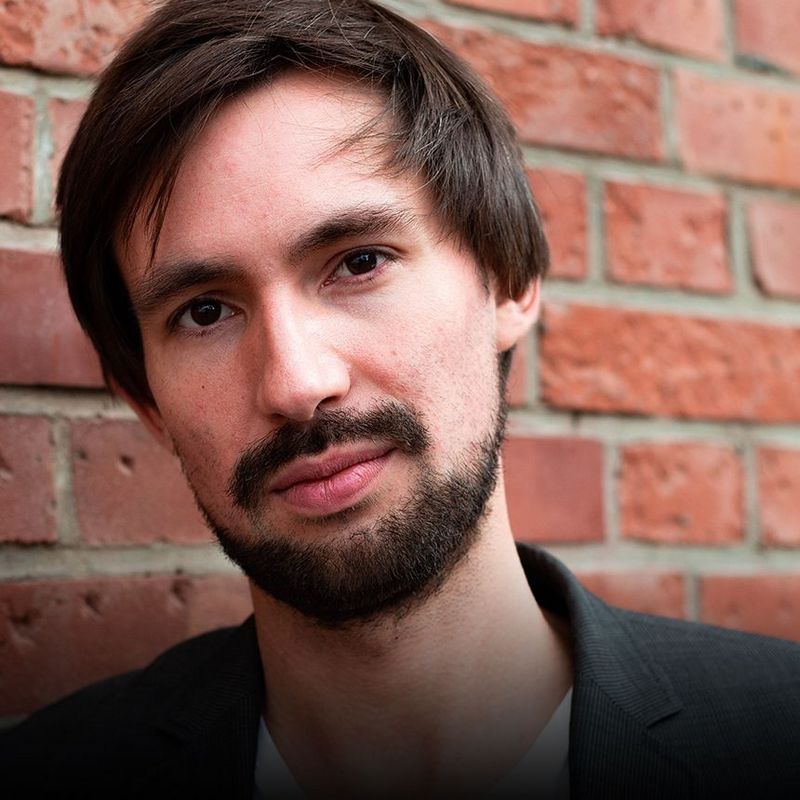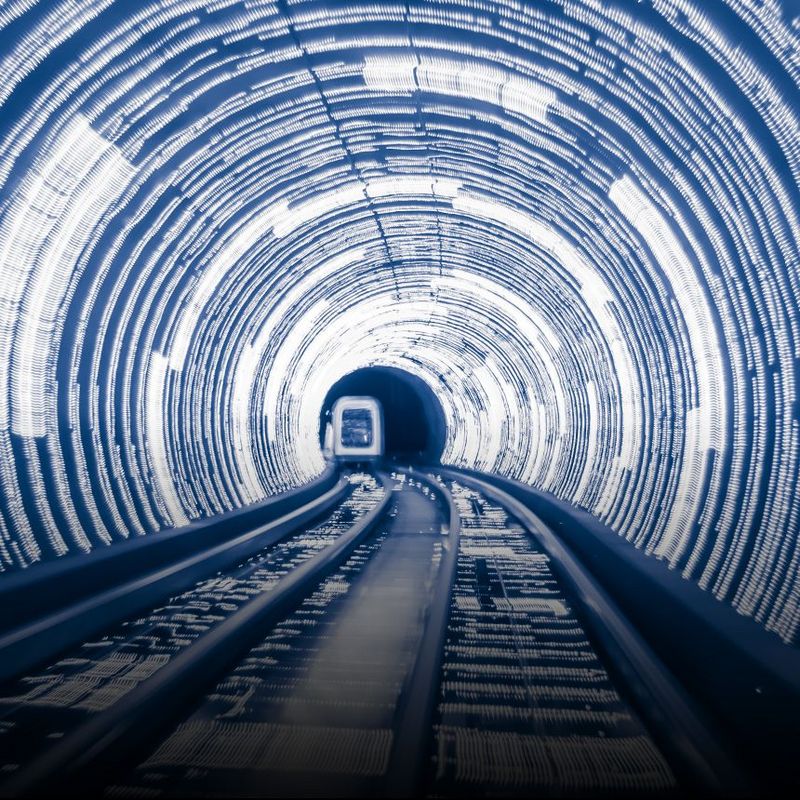25. November 2021
With the coronavirus crisis, mathematical models and simulations have become the focus of public attention. But they are also of fundamental significance in many other areas of life, for example when it comes to avoiding dangerous situations or improving traffic. A field that Professor Gerta Köster from the Munich University of Applied Sciences is working on.
#explore: In the context of your research work, you use “CovidSim” to simulate infection events. How do you do that, and what’s your intention?
Prof. Gerta Köster: Simulations of the spread of the coronavirus have thus far mainly worked on a macroscopic level to map the general growth of the pandemic. But we also wanted to identify the risk of infection in everyday situations."CovidSim" is based on "Vadere", a simulation tool which we developed for pedestrian movements. So far, we have used it to simulate the evacuation of an Oktoberfest marquee and to recreate the evacuation of an underground train carriage after a bomb attack in London in 2005. Our aim is to enhance security in the event of potential mass gatherings of people – and to prevent disasters like the one which hit the 2010 Love Parade. This is because dense crowds always present a risk, something the pandemic has highlighted to all of us all over again. And the particular problem here is that, when an infectious person moves around an indoor space, they leave a trail of breath behind them. And someone else can walk into this respiratory cloud and get infected without being directly in contact with the infected person. In the case of "CovidSim", we’ve extended our model for pedestrian movements to include this infection spread mechanism to help us identify specific contagion risks.
And what has the result been?
One thing’s been very clear: long queues in poorly ventilated rooms carry a great deal of risk. Whether in the supermarket or at check-in counters. And this risk can be reduced by installing ventilation systems. Or, ideally, by avoiding the build-up of queues in the first place, for example by having people draw numbers at the check-in counter and calling them up one by one.
„All the parts of the model contain rule sets. These rule sets are expressed by mathematical formulae, which are then translated into algorithms and, in the next step, into programs.“
How do you build such a model?
We work with what we call agent models. That is, we let virtual agents roam through the digital space, moving like normal people. At the same time, we also incorporate socio-psychological findings: people who feel they belong to a group behave differently in extreme situations than tourists or people from a different culture. In this case, we also have to find a model of how a respiratory cloud spreads and how long it remains suspended in the air. All the parts of the model contain rule sets. These rule sets are expressed by mathematical formulae, which are then translated into algorithms and, in the next step, into programs; after all, it’s on a computer that we carry out these simulations.
What other elements need to be factored into such a model to simulate these situations as accurately as possible?
As British statistician George Box said in the 1970s: “All models are wrong. But some are useful.” What this means is that every model is wrong, in that it’s always associated with a lack of accuracy. But not wrong in the sense that you can't draw any conclusions from it. So it follows that the most important and creative task of a modeller is to decide what to omit. In the case of "CovidSim", for example, we decided against a physically accurate representation of the respiratory clouds. This can be done, but is very expensive and requires extremely long computing times, and the work required is out of proportion to the accuracy of the overall result. To check the robustness of the models, we compare the results with empirical measurement data. And if it doesn’t all hang together, then I have to start again from scratch.
What we usually expect from models of pandemic events is a prognosis that is as accurate as possible, ideally complete with precise instructions for action. Can models even do this, or are our expectations simply too high here?
That depends on the model. For example, if you’re planning a wind turbine or a telecommunications system, it gets modelled beforehand. And these models are extremely accurate and the results very faithful to what these systems do in reality. But these are also robust mechanisms, where a small change in the parameters doesn’t result in a massive change in the system. This is somewhat different with the models which map the progress of the pandemic. If, for example, they predict higher numbers of infections, the very quick response is to dismiss them all as wrong. Which they aren’t. They’ve played through scenarios and predicted a possible outcome. And because not all influencing factors are as precisely known as they are with a wind turbine, for example, they can’t provide such accurate predictions. For instance, the possible effects of countermeasures aren’t built into these models. And once these countermeasures take effect, then the predictions can of course no longer be correct. Nevertheless, they are correct in principle, because they show exponential growth. The problem here isn’t with the models, but with our interpretation of their results. We have to learn to tell which models can be accurate and which can’t.
What does mathematical modelling owe to the computer – by which I mean growing computing power on the one hand and AI on the other?
Computers allow us to calculate things that weren’t not possible before – be they climate models or our pedestrian simulations. That's why it's important for us to present this in a form that a computer can also process. In the past, individual arithmetic operations used to be calculated by lots of women and men using pen and paper. And these human computers, of course, were much smarter and wiser than a computer. That's why you have to give it very precise instructions – and you do that with algorithms and, in the next step, through programming.
© ShutterstockMovement information in traffic: Artificial intelligence provides essential data for mathematical simulations.
What’s behind your "roVer” project?
“RoVer” is an acronym for the German version of "More efficient transport infrastructures through robust networking" and, as the name suggests, relates to walking around. So it’s also about recording crowds, for example at underground stations and other transport hubs. We’re combining our model for pedestrian simulation with the new 5G mobile communications standard, which allows us to record people’s movements anonymously. Each individual smartphone collects information about other smartphones, i.e. people in the immediate vicinity. The devices exchange this information with each other, and we evaluate these data using an AI algorithm. This allows us to determine where crowds are forming – even in places where there are no cameras or measuring devices. After all, crowds often form spontaneously, temporarily and in different places, before a football match or at a festival, for instance.
What are you trying to achieve?
For example, if football fans want to reach their underground train to the stadium, they often choose what they believe to be the shortest route but can’t see that it’s actually blocked. Our system, on the other hand, has that ability. So, our goal is to redirect these flows of people in such a way that they can reach their destinations more safely and quickly, while also taking the strain off the transport system in the process. To assess whether such measures are likely to be accepted, we also work with psychologists here. After all, people don’t behave like grains of sand that can simply be steered in a desired direction. Our initial finding is that it makes more sense to address all the people in a crowd every ten seconds rather than just every tenth person. Because they’re most likely to be travelling in a group and won’t therefore take a different path on their own. The vision is that people will then simply receive this kind of information via the navigation tools they’re using on their smartphones in any case.
The "QUEST" project is also about simulating pedestrian movements. What makes it so special?
In "QUEST" we’re developing an AI model for forecasting flows of people. We fed and trained this AI model with data from people counting points in Melbourne to then predict how many people would pass by these measurement points the next day. The results have been encouraging. And the special thing here is that we’re using modern machine learning algorithms that belong to the field of explainable AI. With conventional neural networks, you always have the problem that, when you feed data in, the neural network ends up smart afterwards, but you yourself remain stupid. So you can't understand why the neural network made certain decisions. This gives rise to the risk of bias: that people don’t get a loan because of their skin colour or because they live in the wrong neighbourhood. Of course, this must be avoided at all costs. Algorithms from explainable AI have historically been considered less accurate than established systems. We’re now working on algorithms that can be validated yet are still accurate.
You deal with models on a daily basis. Has this changed your view of the world?
Of course, it’s much easier for me to assess whether a claim is scientifically sound than it is for most people. This is especially handy during a pandemic. That's another reason why I've already been vaccinated three times. And yes, I admit that I can't walk through a crowd or stand in a queue without comparing them in my head to my models.
About Gerta Köster:
© Johanna Weber
Gerta Köster is a mathematician and professor of scientific computing at the Munich University of Applied Sciences. Since 2010 she has been working on the modelling and simulation of people flows. Before switching to applied science, she worked for 13 years as an engineer, innovation manager and project manager at Siemens. Some of the algorithms they developed there helped ensure that we can make mobile calls today.





